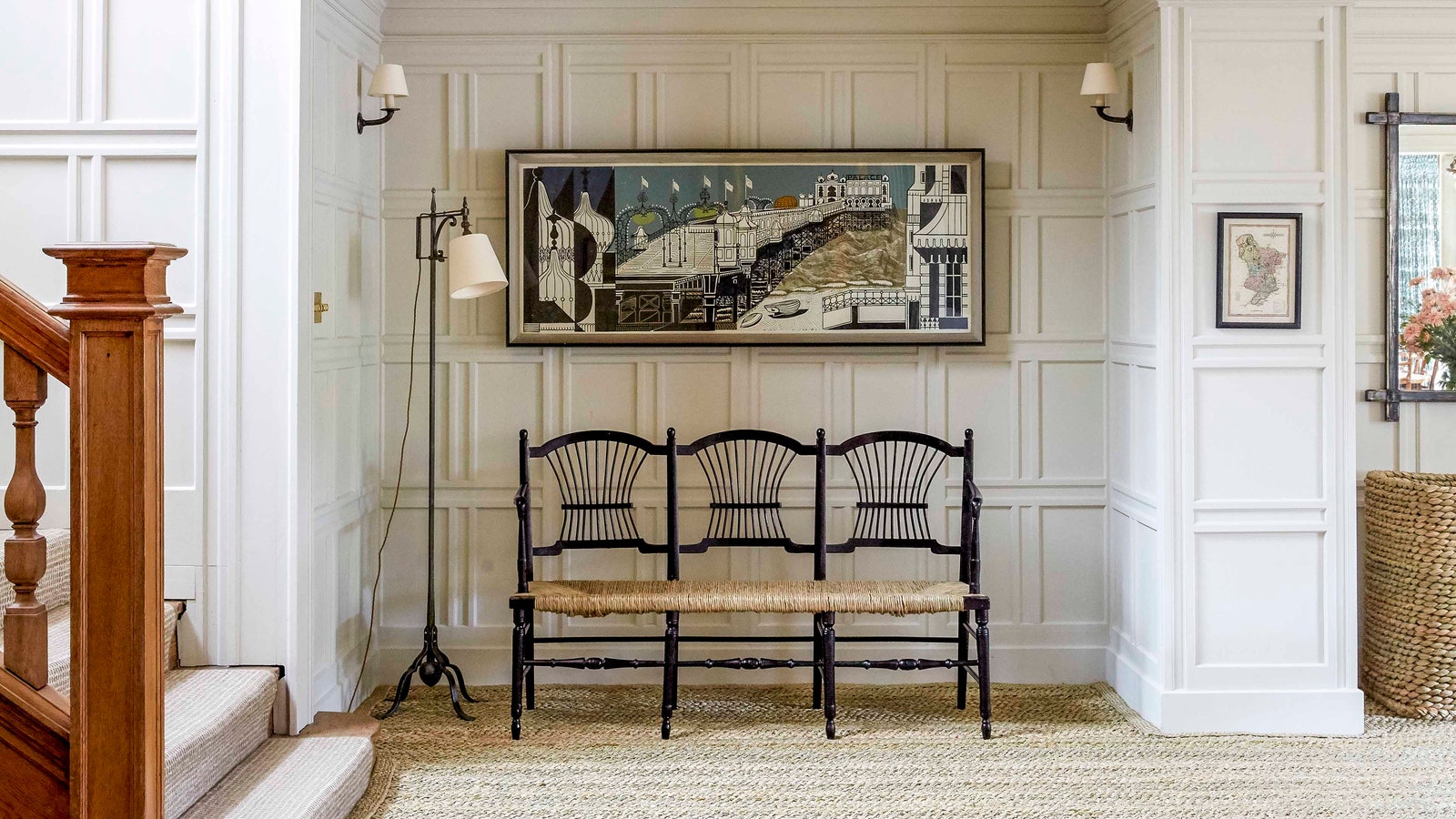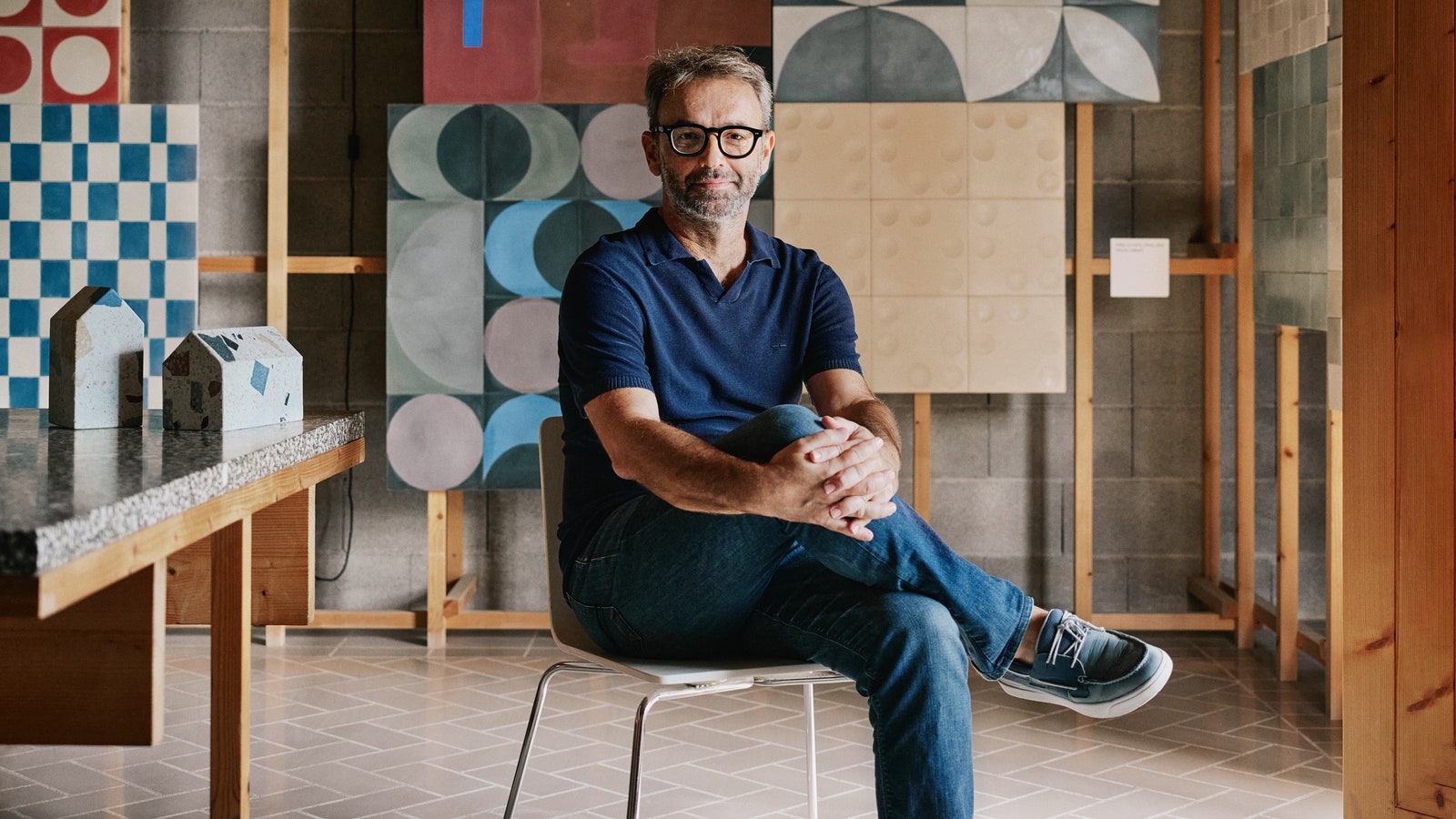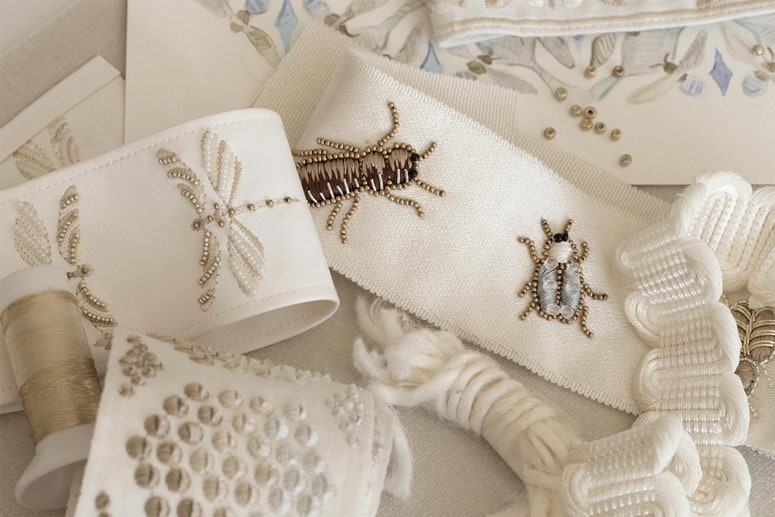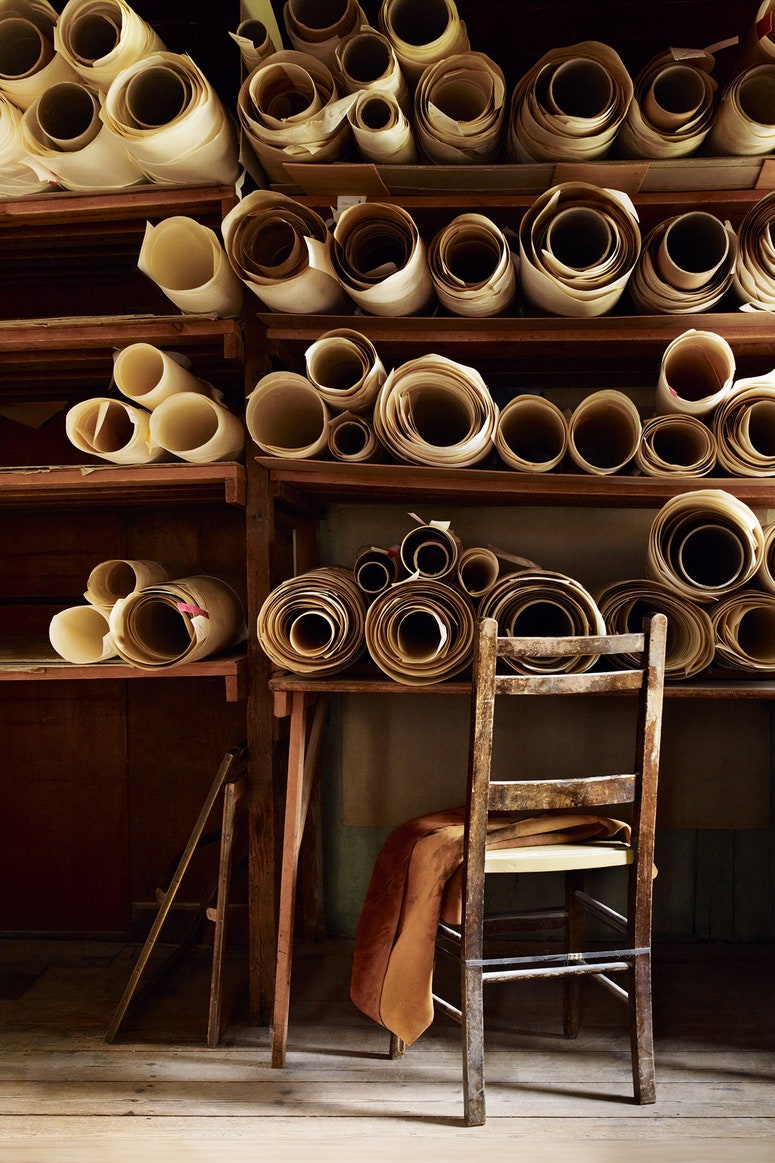There is something lovely about a handmade object. In the days before machinery, everything that appeared in homes (and even the homes themselves) were the result of masterful skill and a lot of elbow grease. Modern technology and changing trends mean that many historic crafts are becoming obsolete. Every year, the Heritage Crafts Association releases ‘The Red List of Endangered Crafts’: those which are at risk of dying out in the UK. Some, such as cricket ball and lacrosse stick making have now become extinct, but others are hanging on in there. Whether it's the history that appeals to you, or the innate uniqueness of something which has a maker's mark, we are firm believers that craftsmanship in all of its forms is worth preserving. Here are some of the people doing their bit.
Oak swill basket weaving
Oak swill baskets are native to the Lake District, where an abundance of fells provides a wealth of raw material. The origins of the craft are unknown: some suggest that it was around as early as Roman times, when they would likely have been used for farming. The baskets are made by weaving thin strips of coppiced oak around a hazel rim. During the industrial revolution there was an enormous demand for such baskets – to carry coal, wood or materials. It was following the Second World War that the swill-making industry saw a catastrophic decline, with modern materials such as metals and plastics used to make baskets instead of wood.
Owen Jones, one of the last known swill basket makers left in the UK, learned his craft in 1988. He was trained under John Barker, a basket maker who himself had been an apprentice in the 1930s. ‘I feel privileged and fortunate to have been taught by him’, says Owen. ‘It’s a craft with hundreds of years behind it and they’re as contemporary and useful now as they ever were’. Owen sells his baskets at local fairs and on his website, often to customers who will use them domestically, as laundry baskets, log baskets or for fruit picking. ‘Not only is it useful, but it's much nicer handling a handmade wooden object than a plastic laundry basket’, he says.
The craft is now critically endangered, and Owen is one of just four full-time basket makers left in the country. He is doing his part to pass his skills along; from his house in Coniston water in the south of the Lake District, Owen runs three-day courses during which he teaches students about collecting the wood, chopping it, soaking it to soften the resins and eventually weaving large, torn off bits of the wood into a basket. Students head home with their own creation, and presumably marvel in the beauty of an object made with care, joy, and ultimately – with function in mind.
Ladder-back chair making
From the estate of the grand Palladian mansion just outside of Edinburgh, The Marchmont Estate, Sam Cooper and Richard Platt run The Marchmont Workshop – a space in which they make rush seated, ladder back chairs from scratch. Though officially the act of making an entire chair is not endangered, making the seat and the frame separately are both considered at risk, and Sam and Richard are two of the few remaining makers who are doing both in the UK.
‘We consider ourselves custodians of the craft’, they say. They trained under the great chair maker Lawrence Neal, who himself had been an apprentice to his father in 1966. ‘We are the sixth generation in a line of chair makers. All of our chair designs were created by the great Arts & Crafts era makers Ernest Gimson and Philip Clissett between 1838 and 1890’. The Arts & Crafts movement of the 19th century saw a renaissance of the craft which had fallen somewhat out of favour, due to its time-consuming production process, and the rise of new and exciting upholstered styles of chairs.

Using ash harvested from the Marchmont Estate, and oak from other neighbouring estates, Sam and Richard turn and steam bend the wood, which then dries slowly over time. The result is an incredibly strong chair, which ‘will get stronger as it dries and shrinks, and can last up to 150 years’. A seat made from woven rush, harvested annually near Stratford upon Avon, can take around four hours for these experts to make.
‘We feel it's important to show how modern these chairs can be’, say Sam and Richard. They are currently working on a new design which combines Japanese and Scandinavian influences with their traditional methods. ‘We’re looking at the designs of Hans Wegner and Karl Hansen for inspiration’, they explain. The plan is to increase the negative space in the chairs, making for a more clean, contemporary look.
Alongside their own designs and bespoke commissions, Sam and Richard run a number of courses where students can bring in a chair frame which needs updating, and make their own rush seat. They are also on the lookout for an apprentice, in the hopes that they can ‘make sure the craft survives beyond us’.
Passementerie
Passementerie is the art of weaving textiles to create decorative trims, tassels, braid and fringing, which can be used in fashion and interiors. Passementerie can be made by a machine, which makes the handmade pieces even more rare. There are just a handful of people in the UK who practise the craft full-time, and London-based Elizabeth Ashdown is one of them: ‘the unofficial tagline for passementerie is jewellery for the home, which I think is a great description’, she says. ‘These finishing touches are made using such interesting materials and colour combinations, which can be richly decorative in a way that large stretches of textiles can’t’. A kaleidoscopic, intricately patterned woven fabric might be a little much if used to upholster an entire sofa, but as a neat finishing touch, it’s a beautiful way to create a considered piece of furniture.
Passementerie is very subject to trends. Towards the end of the 20th century, classical furniture and elaborate textiles were all the rage, but this look eventually gave way to the clean lines of minimalism, and work for passementerie artists dried up. That’s not to say it’s gone altogether - look through any issue of House & Garden and you’re almost guaranteed to see a trim or tassel somewhere, and it is thanks to these designers (as well as the film & TV industry, which often turns to passementerie to reproduce pieces for sets), that the craft is still alive today, just. As Elizabeth explains, ‘for many years it was considered old fashioned and too traditional. But people are starting to realise that it can be the complete opposite – fresh and light and contemporary’.
Elizabeth studied textile design, before ‘accidentally falling into passementerie’, she says. ‘I fell in love with it because I thought I could be more creative – you can use a wide range of materials and intricate patterns and details’. Last year, she was awarded a grant by the Queen Elizabeth Scholarship Trust (QUEST), to train with two experienced passementerie artists, Clare Hedges and Bryan Turner. Through such schemes, skills can be passed down and endangered crafts kept alive.
Encaustic tile making
The history of encaustic tiles dates back to 1066, a date that many readers may recognise as the Battle of Hastings. Indeed, it was on winning the battle that William the Conqueror, Normans in tow, came to the UK and began to build a vast number of Catholic churches and cathedrals. Typically decorative in style, the churches were embellished with stained glass windows, wooden walls and on the floor, encaustic tiles. These are patterned tiles which, unlike many modern examples, do not have the pattern painted or printed on them, but it is built into the tile itself. A coloured slip which is poured into a recess, and as it dries, it bonds to the tile. Not only does it make a pretty addition to any room, but a remarkably durable one too– a printed pattern will fade over time, but an encaustic tile will last for hundreds of years.

When Henry VIII announced the end of the Catholic Church in England and set up the Church of England, whose churches were far less embellished, the demand for encaustic tiles quickly died out, not to resurface until the Gothic Revival period in the late 18th century.
Architects, designers and craftspeople started to dig deep into the history of our architecture to discover and revive mediaeval crafts: one man who spearheaded the movement was the tile maker Herbert Minton. Not only did he start to reproduce encaustic tiles, but he decided that different coloured slips would look rather lovely too. Many encaustic tile factories started to crop up all over the country, each using local clay, though few survived World War I and II.
Today, there is just one large-scale producer of traditional, handmade encaustic tiles: Craven Dunnill Jackfield, just outside of Birmingham. There are twenty specialists making the tiles here, though the scale of it is rather unbelievable. In 2020, with lockdowns closing in, they finished a thirteen-year long project replacing 40,000 of the floor tiles in the Houses of Parliament.
‘It’s a unique thing, and a legacy, which will last hundreds of years’, says Chris Cox, one of the master tile makers at Craven Dunnill Jackfield. Every year, Chris visits Dumphrey’s House, in Scotland, where he teaches a two-week long course in the art of encaustic tile making. ‘The reason we dig up Roman mosaics is because they don’t deteriorate. It’s the same thing with encaustic tiles. Once you fire clay, it’s around forever. It's a fantastic and exciting material’, he says.
Parchment & vellum making
When the King signs official documents, such as the ‘Proclamation of Accession’ (a document which confirms his ascension to the throne), it is on vellum, an ancient predecessor of paper, made using calfskin. Animal hides, including sheep and goatskin which are used to make parchment, have been used for manuscripts since around 1500 B.C, though the act of making it is now considered a critically endangered craft. ‘Man has been using animal skins since he stepped out of the cave’, says Paul Wright, the managing director of William Cowley Parchment Makers, based in Milton Keynes. The small company is made up of three masters and an apprentice, and is the last remaining manufacturer of parchment and vellum left in the UK. In the mid-19th century, with the rising popularity of wood pulp to create large volumes of paper, parchment and vellum started to fall out of favour.
This is in part due to the cost (it can be about £20 for a sheet of A4 vellum), and in part due to the way it's made, which is time consuming and unfavourable among vegetarians and vegans. ‘People don’t quite understand the materials’, says Paul. ‘We only work with by-products of the meat industry, and rescue about 170 hides from going to waste every month’. Paul adds that unlike paper, ‘there’s no deforestation involved’. The benefit of parchment and vellum is not just the luxurious look and feel, but how long they last, which is at least 5,000 years, and according to Paul, is the reason that we know as much as we do about early civilisation and historic events: ‘the Magna Carta was written on sheepskin. It’s over 800 years old and it looks like it was written yesterday’, he says.
It is not just as a medium for writing and art to which these materials lend themselves. Many of Paul's commissions are for interiors work: vellum can be used to clad tables and chairs, and he is often found in the workshop making skin to cover a drum.
As a manuscript, it is still used by members of the royal family (Queen Elizabeth II used William Cowley parchment for the ‘The Instrument of Consent’, an official document which confirms her granting consent to Prince William and the then Catherine Middleton to marry), but it is rarely favoured over paper by the layman. According to Paul, it should be: ‘it’s a very special way to create a piece of personal or national importance. For example, you could use it to make a birth certificate – if it doesn’t last 5,000 years I’ll eat my hat’, he says.

